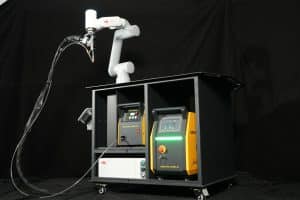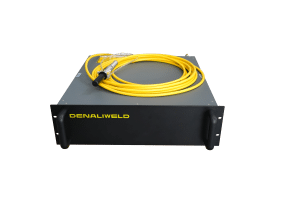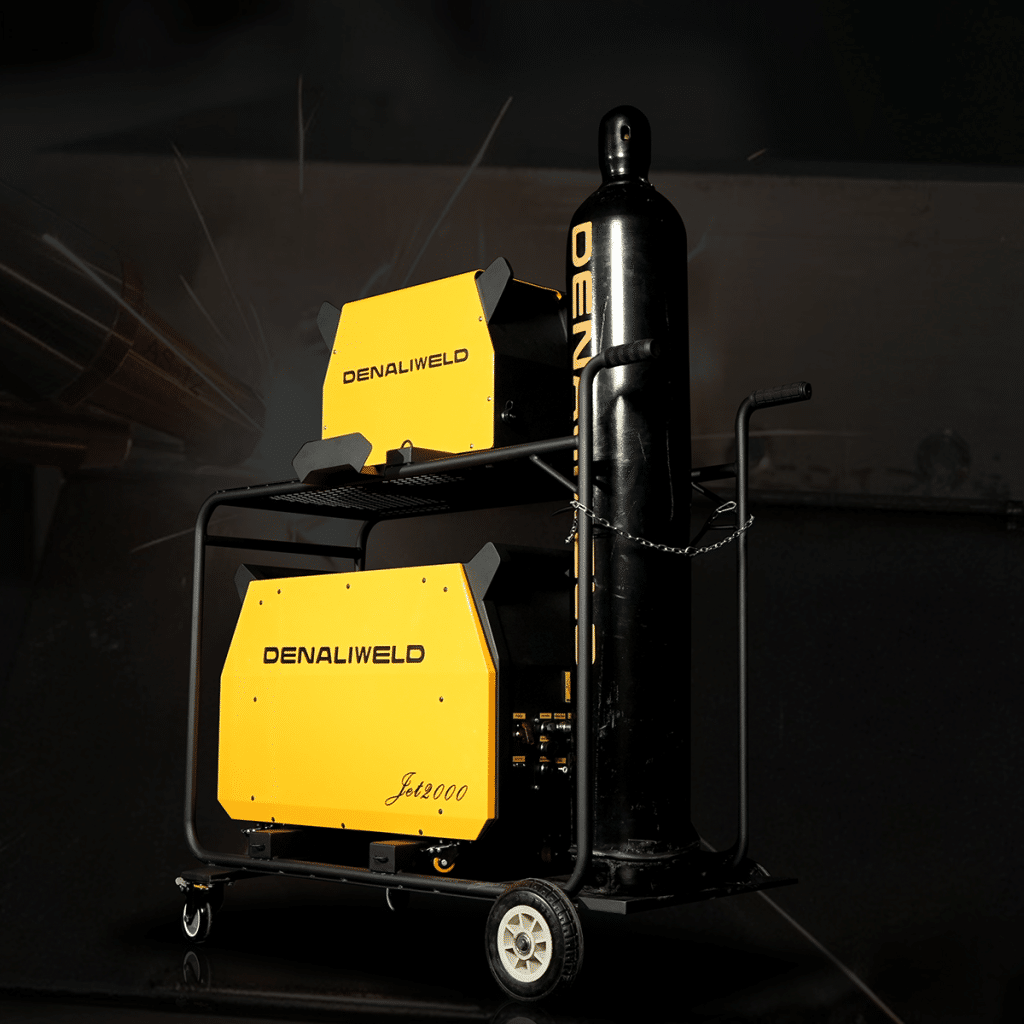Welding bubble generation principle
Laser welding uses a powerful laser beam to heat and melt the materials together. The molten material then solidifies to form a strong and lasting bond. If the welding conditions are not perfect or if there are impurities in the material, holes can form in the weld. Porosity is a gas pocket in a weld that weakens it and increases the risk of cracking or breaking under pressure.
Hazards of Weld Porosity
Porosity in laser welding can weaken the weld, making it less strong and durable. This is a risk to its integrity. Pores can also act as stress concentration points, which can lead to premature failure of the weld under load.
Porosity in welds can allow liquids, gases, or contaminants to enter, causing corrosion or damage. The consequences of poor welds require rework or replacement at the cost of time and money.
Common causes and solutions
Weld material contamination.
Any contaminants on the surface of the material being welded can create pores that are trapped as the material is heated and fused together. This can lead to porosity or voids in the weld seam.
solution:Before starting the welding process, it is important to ensure that the surface to be welded is clean and free of any contaminants. Any dirt, oil, grease or other debris on the surface should be removed using a suitable solvent or cleaning solution. This can be done using methods such as ultrasonic cleaning, steam degreasing or chemical cleaning. Alternatively, a laser cleaner can be used to pre-treat the surface prior to welding. Also, the use of a suitable shielding gas can help to protect the weld pool from contamination.
Improper use of protective gases
In laser welding, a gas is used to protect the weld from rust and keep the lens clean. The gas is fed through a nozzle on the welding machine to prevent contamination and ensure a strong weld. Gas holes in laser welding are mostly caused by using shielding gas incorrectly. The reasons for this vary slightly depending on the type of shielding gas being used.
1, nitrogen produces the cause of porosity
In the laser welding process, nitrogen from the outside into the molten pool, nitrogen in the liquid iron solubility and nitrogen in the solid iron solubility is very different, and thus in the cooling solidification process of the metal, as the solubility of nitrogen with the drop in temperature, when the molten pool of metal cooling to the start of crystallization, solubility will occur a substantial and sudden drop, at this time, a large number of gas precipitation to form bubbles, if the bubble floating speed is less than metal crystallization speed, then generate pores.
2, argon gas generated by the causes of porosity
During laser welding, a small hole in the metal releases steam, creating a vortex. Argon gas is then injected into the hole, moving forward and entering the molten pool as bubbles. Because argon doesn’t dissolve well and the welding cools quickly, bubbles can’t escape and stay in the weld, creating holes.
solution:
1. Metallurgical principles and reactive gases are used to make gas dissolve in the weld or react with the molten metal. This process creates a compound.
2. Pulsed laser welding alters pore behavior and decreases the amount of shielding gas pulled into the pores. This method is not yet able to completely eliminate porosity.
3, The use of beam oscillation to reduce or eliminate porosity in laser deep fusion welding.
When welding, swinging the beam back and forth causes the weld to melt repeatedly. This keeps the liquid metal in the weld pool longer. The swinging motion also increases the heat input per unit area. It reduces the depth-to-width ratio of the weld. This helps bubbles escape and reduces porosity. When welding, swinging the beam back and forth can help keep the liquid metal in the weld pool longer. This motion also increases the heat input and reduces the depth-to-width ratio of the weld. As a result, bubbles are able to escape more easily and porosity is reduced.
The beam moving back and forth makes the small holes move too, stirring the weld pool. This helps get rid of air bubbles in the weld, making it stronger.
More notes on the use of gases can be found in this article:The use of gases in laser welding
Welding speed too fast
The laser beam may not provide enough energy to completely melt and fuse the materials together, resulting in incomplete fusion between the materials, which can create voids. At the same time the rapid cooling of the weld can cause thermal stresses and create cracks or fissures in the weld.
solution:
Reduce the travel speed: If the welding process is moving too fast, the welding speed can be reduced to allow more time for the material to melt and fuse. This can be achieved by adjusting the welding parameters, such as the laser power or the travel speed of the weld head.
Increase the laser power: Increasing the laser power can help compensate for faster welding speeds as it provides more energy to the weld area, allowing the material to melt and fuse together more quickly.
Use a different laser beam shape.:The shape of the laser beam can also influence the welding speed. For example, a wider beam can cover a larger area and make the weld faster. Conversely, a narrower beam can provide more precise control and may require slower welding speeds.
Adjusting the laser’s focus.:The focal point of the laser beam can also affect the welding speed. If the focus is too high, the laser will not have enough energy to melt the material, while a focus that is too low will result in excessive melting and distortion. Adjusting the focal point to the optimum position can help to achieve a better balance between speed and weld quality.
Check for any mechanical problems: Finally, it is also important to check for any mechanical problems that may affect the welding speed. This could include problems with the welding equipment, such as worn or damaged parts, or problems with the material being welded, such as uneven thickness or inconsistent properties.
By taking these steps it is possible to adjust the laser welding speed and optimise the process to achieve the best possible results.
Incorrect laser parameters
Laser welding requires precise control of laser parameters such as power, pulse duration, and beam focus. If any of these parameters are set incorrectly, then bubbles may form in the weld.
solution:
Review the operating manual: The first step in correcting the laser welding parameters is to review the operating manual for the welding equipment. The manual will provide information on the recommended parameters for different materials and thicknesses, and can help identify any potential issues with the current settings.
Consult with a technician: If you are not familiar with the equipment or the welding process, it is recommended to consult with a technician who has experience with laser welding. They can provide guidance on the correct parameters to use for the specific material and application, and can also help identify any issues with the equipment that may be affecting the welding process.
Adjust the parameters: Based on the recommendations from the manual and the technician, adjust the welding parameters to the correct settings.
Learn more about what to look for in a laser welding machine.





